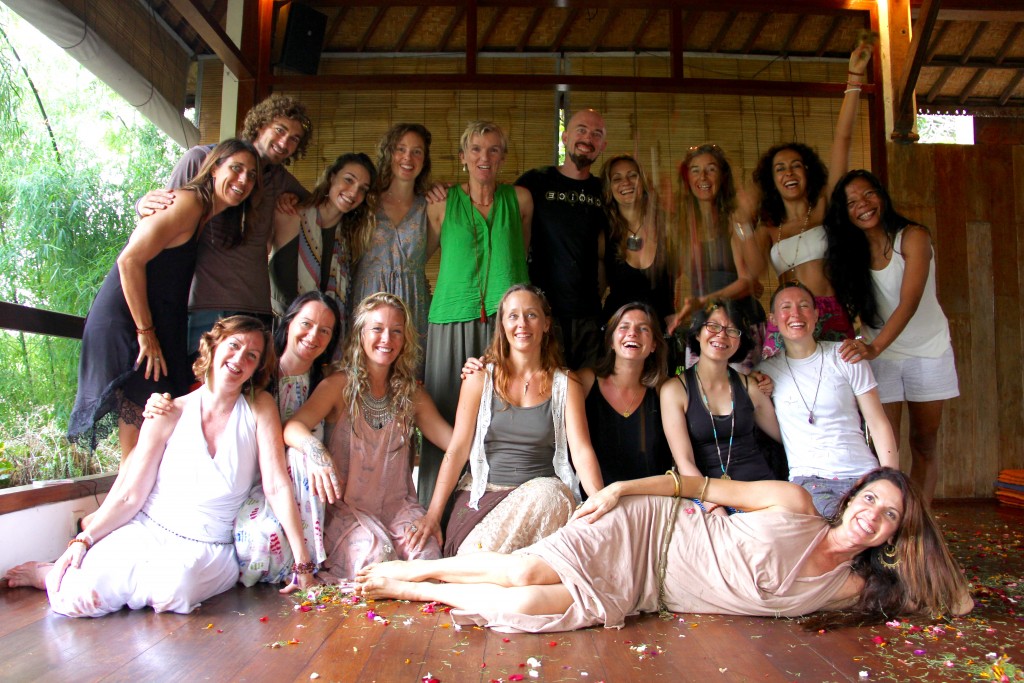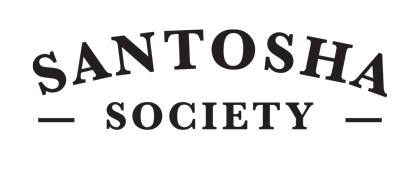A yin yoga teacher training worth raving about
Long brown mermaid hair, chunky gold arm bangles, and massive hoop earrings enhance her natural goddess-like appearance. “Her presence fills the room with encouragement and inspiration” is how she was described to me long before I knew her. She teaches yoga with a focus on consciously unraveling the body-mind connection through guided awareness. Strong yet humble, whole-heartedly devoted yet completely down to earth, she is an experienced teacher without the all-knowing ego that we so often see at the front of the yoga room.
Her name is Tina Nance.
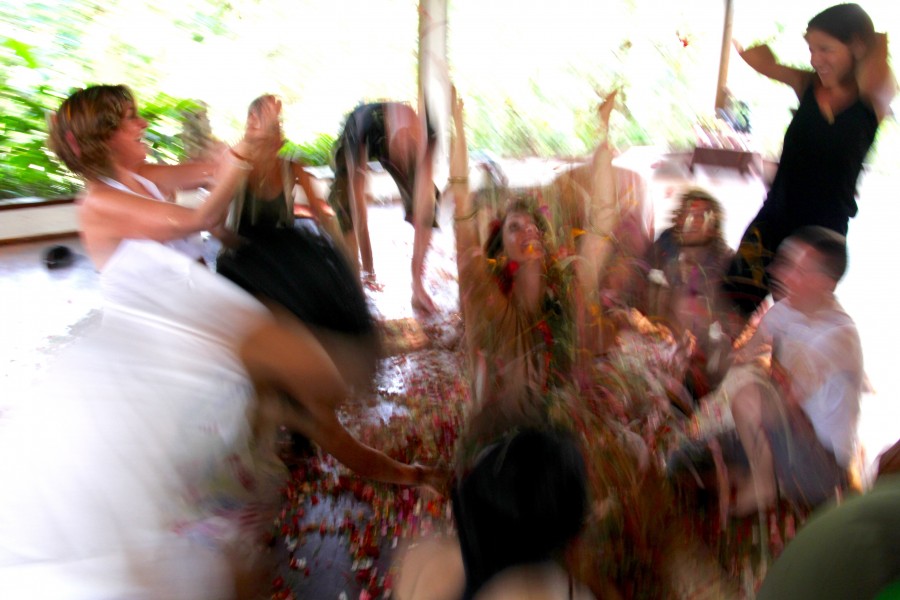
“True healing is not the fixing of the broken, but the rediscovery of the unbroken.”
Tina Nance
My first encounter with Tina was a year ago when I attended her “Hormone Balancing” Workshop. We discussed the moon cycles and how this affects us as women. We spent nearly two hours on our yoga mats practicing and learning what yoga poses help balance our hormones. We talked about a lot of things, and those things have stuck with me since.
A few weeks later when I heard about Tina’s 100 hour Yin Yoga training, I signed up. I wanted to understand the meridians, enrich my understanding of yin yoga, and just maybe calm my mind a little with mindful meditation. This is an account of the two week training that has since not only altered my own personal yoga practice but the way I teach to others as well.
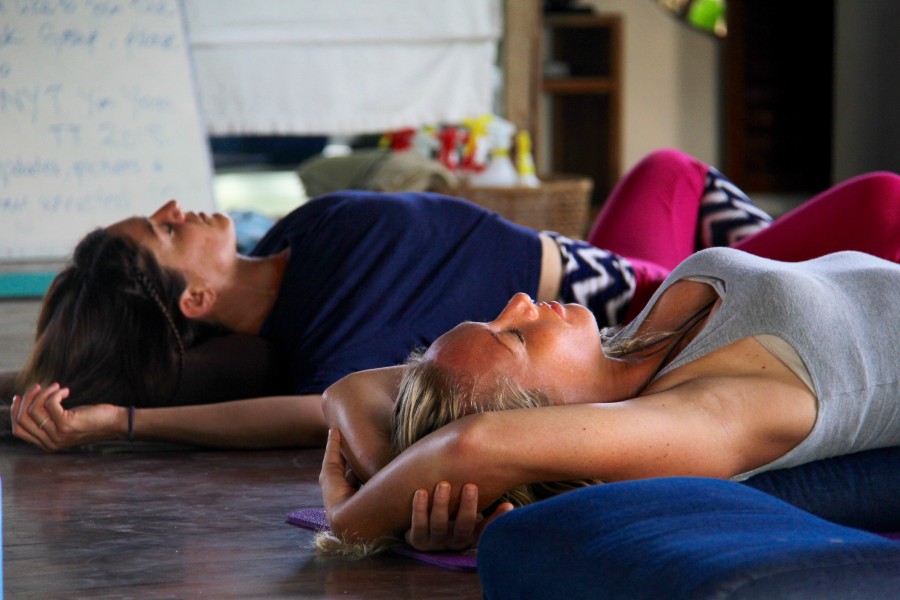
The Team:
The team that Tina put together couldn’t have been individually more different, yet together they presented a massive amount of information in an incredibly thorough, cohesive way. Simon Martin, a chiropractor and yin yoga enthusiast from Perth, Australia, taught us all the unseen anatomical parts of the body involved in a yin yoga practice. Perhaps the most interesting anatomy teacher I have had the opportunity to study with. His enthusiasm for the body is contagious.
“The purpose of a yoga teacher is to help the students connect to their own body. Perhaps this is the distinguishing factor between exercise and yoga.” ~ Simon Martin
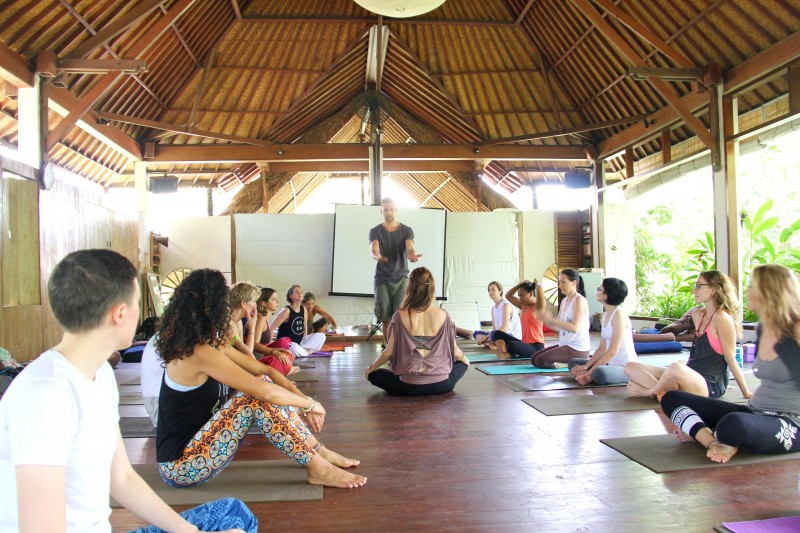
Dr. Jimi Wollumbin is a Traditional Chinese Doctor, Acupuncturist and to us in the class, our medical guru. Jimi graduated as a Sports Injury Therapist in 1999 before completing his internship in Traditional Chinese Medicine at a Beijing Hospital during the SARS outbreak of 2002. Jimi has given speeches at the UN and has worked with many wellness-based health initiatives aiding countless disadvantaged communities.
He is certainly an incredible asset to the team. Every lunch and water break throughout the entire two weeks, you could find Jimi in a corner, pulled aside by a student to ask him for more information and advice. As a teacher, he speaks fast. He has so much life experience and information to give, it would take a voice recorder to catch it all. The thing is, it wasn’t overwhelming. It was inspiring. Perhaps thats why he was always inundated with questions on anything and everything, because he is truly a wealth of information. In fact, I learned so much more than I imagined possible during these two weeks in the classroom, and I believe that is largely because of him.
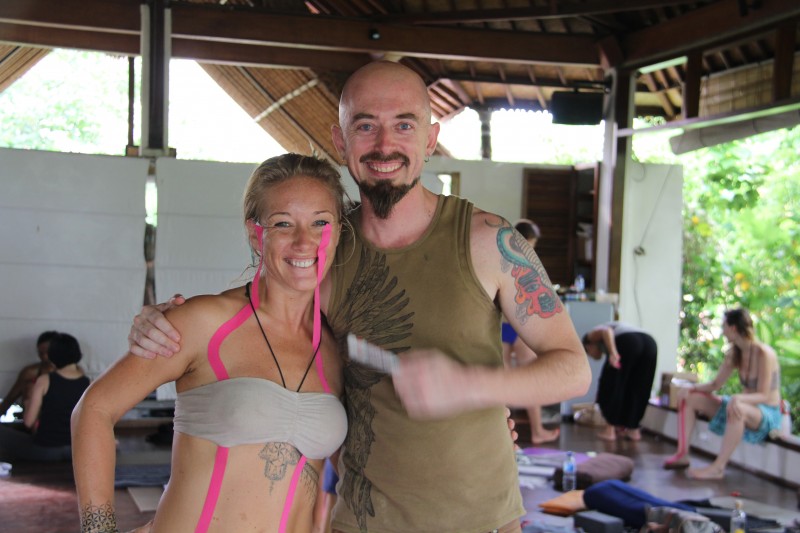
The last few days of the course, Simone MacKay, founder and director of the School of Sacred Arts, guided us into the world of Yoga Nidra. Yoga Nidra is a practice that dives into the deeper levels of consciousness and a systematic method of inducing complete physical, mental, and emotional relaxation. Nidra in sanskrit means “sleep”, some call this yogic sleep. Although our time with Simone as our yoga teacher was short, what she gave offered resonated very deeply with me.
As most who have completed a yoga intensive or teacher training know, the entire experience can be quite intense. With a full training schedule full of new, thought-provoking information while at the same time deeply exploring the inner workings of ourselves, Simone’s gift of guided Yoga Nidra was a calm healing balm which we all needed at the end of the two week journey. From these few hours spent with Simone, there is no question that I will practice with her more in the future. She is a gentle, smiling, humble soul whose pure, soft nature only amplifies the calm and relaxation she is spreading to the world through her teachings.
Finally, let me introduce you to Tina Nance. Tina reiterated to us that she was teaching “her” practice, a practice that works for her, a practice she believes in. Trained as a Shiatsu masseuse while living in Australia, she continued on the path of body work by completing a 2 year yoga therapy course under the guidance of her teacher Jack Marshall. Jack was a student of yogi master Masahiro Oki, and Masahiro Oki was a student of the god-father of yoga, Krishnamacharya. Oki took his knowledge of Traditional Chinese Medicine and mixed it with the yoga training Krishnamacharya passed on to him. Tina’s teachings are strongly tied in this lineage.

Her teaching is based from her background in Traditional Chinese Medicine, mindful meditation and yoga therapy. She takes her own experience, her own revelations derived from her own practice and teaches just that. She teaches yoga with a focus on healing, as a means of therapy. In my opinion and those of many others I know who have taken her classes, workshops and trainings, her teaching are not only unique within Bali, but perhaps in the world.
Tina Nance not only organized a brilliant training, but she ran it with tireless patience and grace. What my girlfriend told me months ago is true, “she fills the room with enthusiasm and inspiration.” Despite the long days and detailed information we were dealing with, she remained upbeat and smiling through the entire course. I believe this is a testament that her practice is working. She is a happy, loving, compassionate and humble teacher.
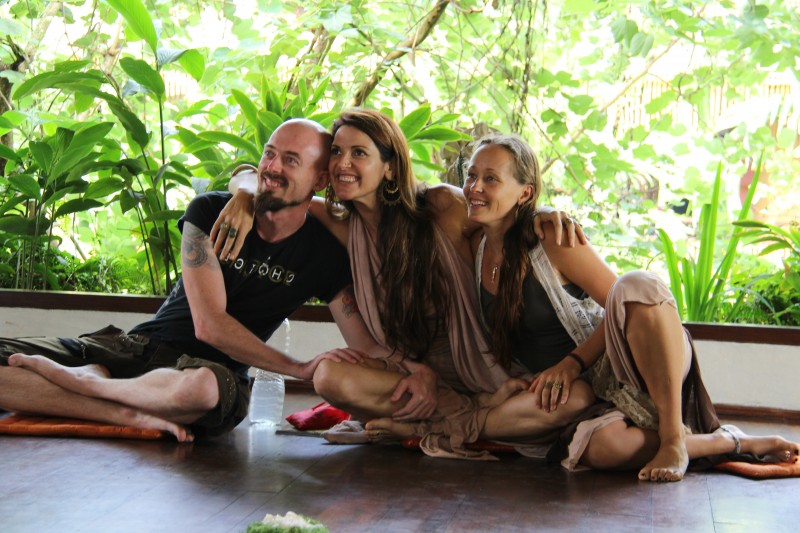
The Training:
During the training we were led through satsang, which is spiritual sharing. We were introduced to spiritual influencers through videos, quotes and recommended readings. We gathering into sharing circles where we, as students, expressed how we were feeling, and in turn we, as yin yoga teachers, have a better understand of what our own students will feel. We were lead through two beautiful yoga classes a day, and guided in meditation. We spent countless hours learning the Chinese elements, meridians, and applying those to the body.
“Tina is such an amazing teacher and conveyed her huge knowledge in such an authentic way so that we all soaked it up like sponges.” ~ Martina Reinbold
The Yin Yoga Training gave us all an understanding of the body through the Traditional Chinese Medical system. We learned what Jimi refers to as “a usable body map.” From this “body map,” we integrate yoga asana with the Traditional Chinese Medical system which gave us as yoga teachers a way to look at the physiological problems of our students and a yin yoga approach to heal.
“Even senior yoga practitioners generally have troubles in applying the asanas they know so well to the vast array of non musculoskeletal health problems we all commonly encounter. Although most postures do indeed have clear and obvious physiological indications (such as sarvangasana/ shoulder stand for use in problems of the throat like Hypothyroidism), as a whole it appears to me that the absence of a usable body-map leaves most people with a limited number of asanas they they really know how to apply to physiological problems” ~ Jimi Wollumbin
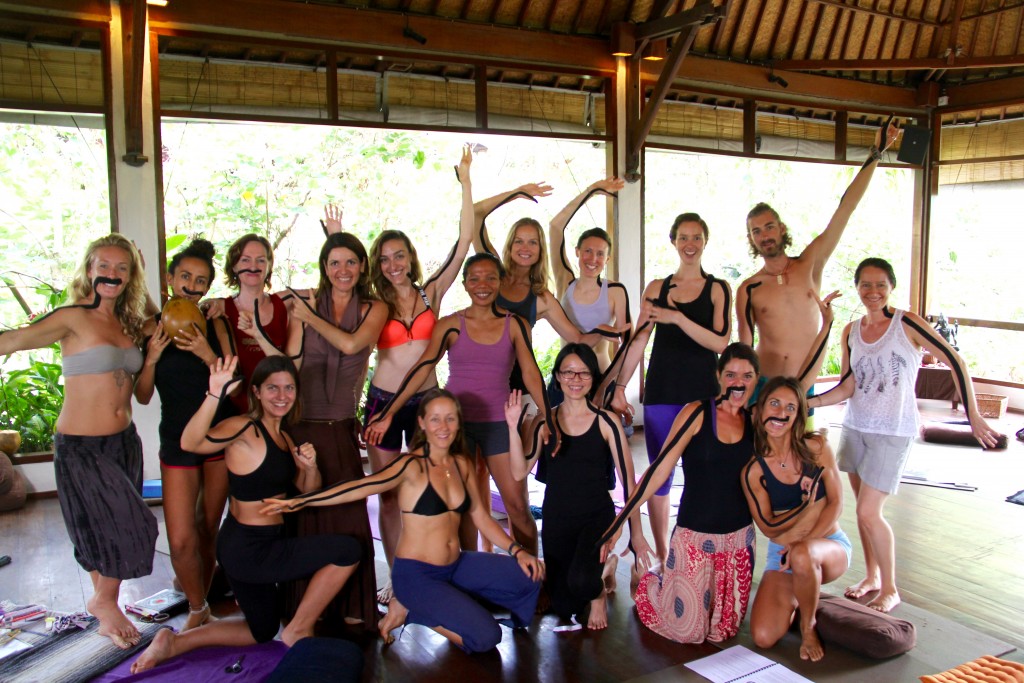
Yin Yoga:
There is a lot to discuss when it comes to yin yoga. Yin Yoga was inspired from the Taoist of China. From the principles of Traditional Chinese Medicine, these Taoist practitioners developed a system of movement targeting the deep connective tissues of the body. Anatomically we are dealing less with just muscle, and more with the connective tissues such as fascia, ligaments, tendons, cartilage, and sacks of fluids called bursae. Often times we store tightness, emotional stress, tension and scar tissue in these areas.
I doubt these Taoist practitioners used western terminology like “fascia” and “connective tissue” like we use today, but what they understood extremely well is how energy flows through the body. They call this energy qi. When qi flows freely, it breaks up blockages and gives the body a feeling of lightness. It is that light and free feeling we walk away from a yin yoga class with.
In the past 10 years yin yoga has quickly grown in popularity. This form of yoga is still so new to the western world that certain poses can not be found in books or modern text. This is why learning the basics of Traditional Chinese Medicine is much more beneficial than learning the poses and how-tos of a yin yoga class. By learning the meridians, one can figure out by oneself how to stimulate them. By understanding the Traditional Chinese Medical system of balancing the body, we can locate our own imbalances and use this form of yoga to harmonize them.
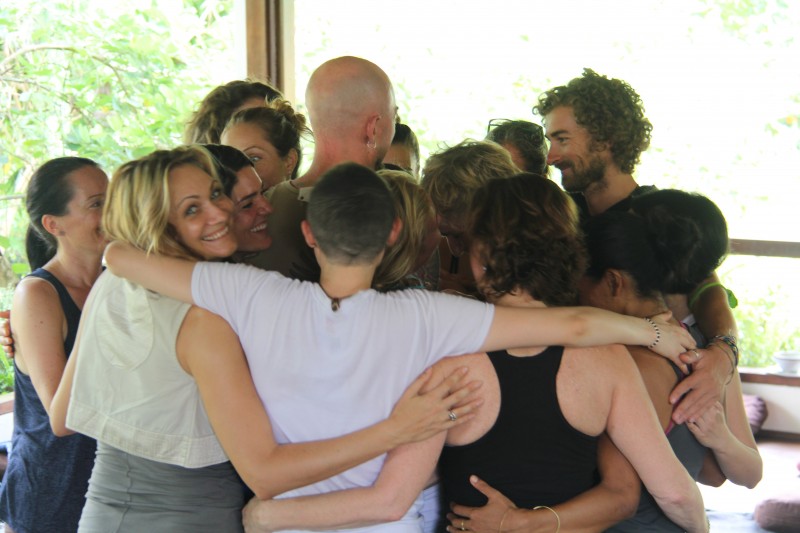
There are three components in yin yoga: 1) No muscular engagement – total relaxation, 2) Longer amount of time in a posture and 3) Stillness. By taking a yoga pose to greater depths, even if that means potentially meeting levels of discomfort, or what we are calling the “edge,” you are finding a position that is “optimal” for creating change in the denser, deeper parts of the body. By holding these poses for extended amounts of time, the muscles begin to soften and finds a place of rest. From here we are able to access the deeper layers of connective tissue & nourish the joints. Finally, from this place of rest, we attempt to still the body and mind. So we are not only loosening the tighter, denser parts of the body, but the mind as well.
“Stillness” sounds simple, right? For me, this was the most difficult part of the training. “Stillness” is a strong intention to remain still, silent, open and aware. It is a key ingredient in the healing process of Yin Yoga. Tina describes “stillness” as “when you sit with your body and quietly observe it’s process” without judgement, analysing or criticism. Meditation teacher Goenka calls it “the art of living.” It is a practice of letting go of the past, surrendering beyond projections of the future and finding contentment by living in the present, in this moment. Through the “stillness” practice of Yin Yoga, Tina is teaching a technique to “transmute suffering into transformation by learning practical & effective tools to access discomfort & challenge, as a gateway to realize & embody the freedom & truth of who we truly are.” Tina constantly reminded us that “there is no intention to go deeper; there is no striving.”
Personally:
In my own yoga practice, I always had a slight seperation between yoga and meditation. Through my practice in Ashtanga Yoga, I would concentrate on dristis, ujjayi breathing, bandhas and repetitive vinyasas all at the same time. And I am confident that through this practice my mind become more one-pointed, more concentrated, but I can not say that I was practicing mindfully.
During this two week training I stopped and asked myself why not try to be mindful all the time? If I can bring this mindfulness into my yin yoga practice, it is a stepping stone to bringing mindfulness into my everyday life. Once again, I found myself realizing that yoga indeed is a path, and I still have a long journey ahead of me, at least in the whole mindfulness department. Through the practice of stillness within my yin yoga practice, I am becoming more mindful on and off the yoga mat.
As a yoga teacher, I can confidently say that I now have a more thorough understanding of the basic principles of Traditional Chinese Medicine, the 5 Chinese elements, 12 main meridians and organs they are associated with. I understand the physical and emotional symptoms one might experience if there are imbalances in the body. I understand how to address these imbalances in the body by stimulating specific meridians. As mentioned before, this training gave me a useable understanding of Traditional Chinese Medicine and how to apply these time-tested principles in a yin yoga practice. With the knowledge of this meridian “body map,” I have a greater understanding of yin yoga and how to teach it to others.
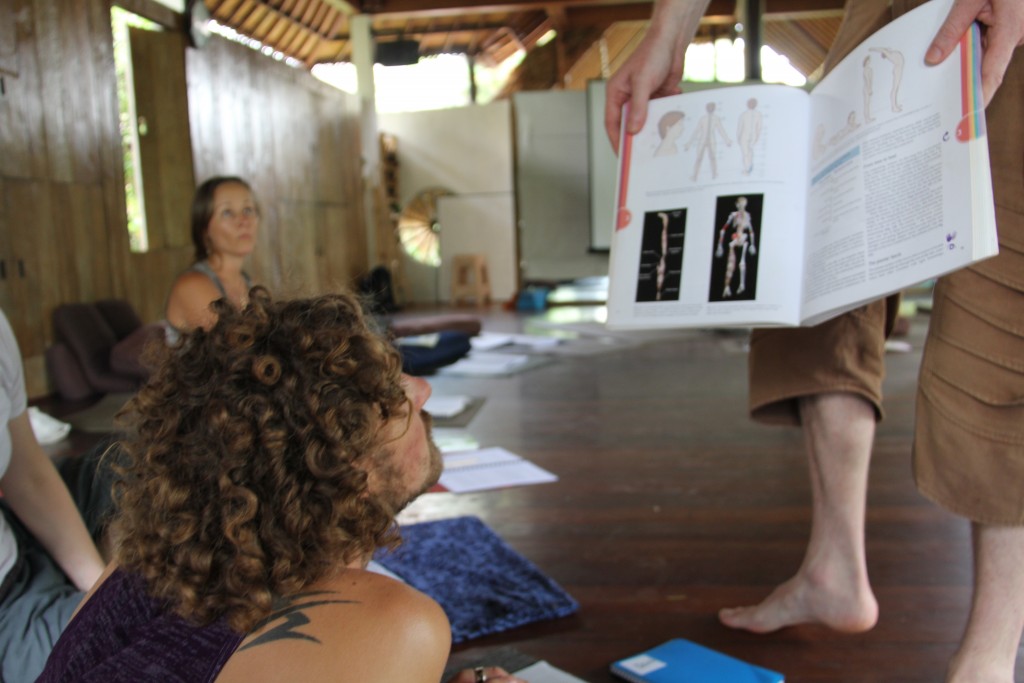
So with all this new information in addition to my previous 15 years of yoga studies and practice, Tina taught me that it is time for me to create my own practice. It is time to wake up, walk to my yoga mat, and see what it is I need in this present moment and experiment with that.

My classmate Kerry Grant said it perfectly when she said to me, “what I love about Tina is that she makes you feel that you can be responsible for your own well-being.”
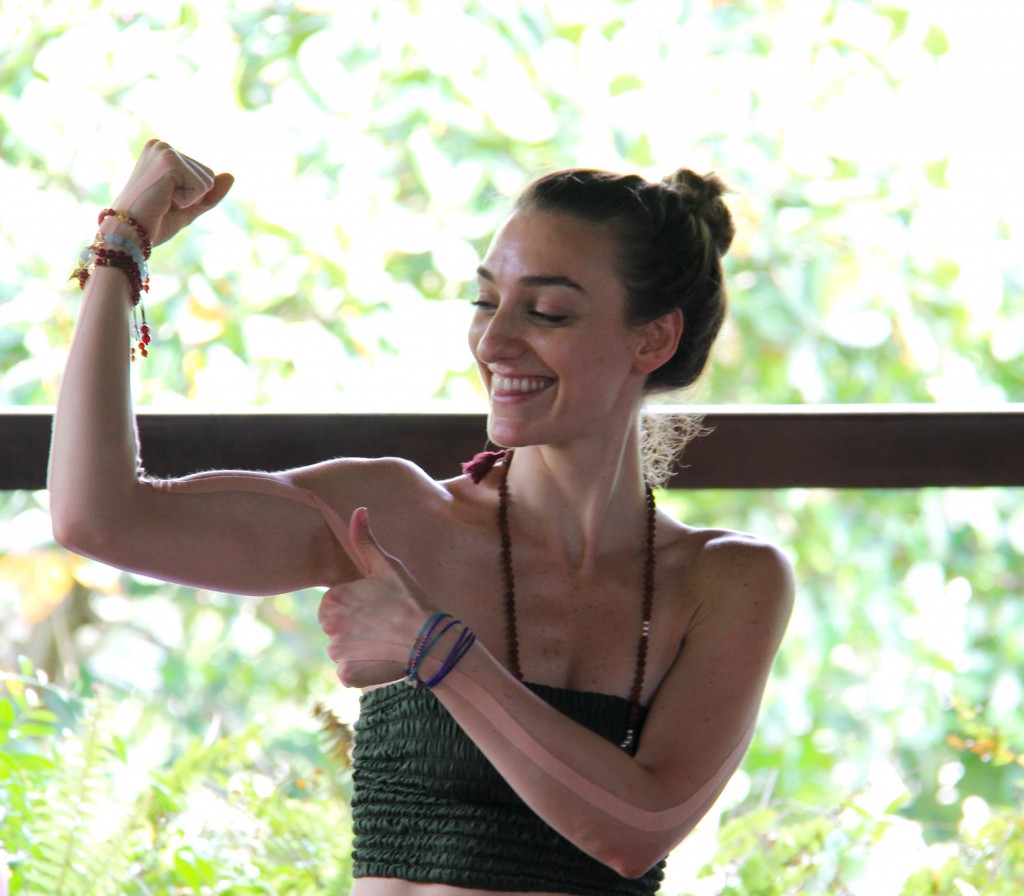
The greatest lesson I received from this training as a teacher is to teach not from the teachings of others, but to take other’s teachings, experience it for myself, and then teach from that.
“The last day of the course was the beginning of my new awesome life, it opened up a massive gateway for me to want to explore my own world further, and I am truly thankful” ~ Roxana Mousavi
Roxana took the words right out of my mouth. Off I go, down my own path, looking inside myself and creating a yoga practice, a yogic path built just for me, by me. I believe that there comes a time for every yogi, when we have to take all the teachings we have received and become the teacher that our individual yoga path has led us to be.
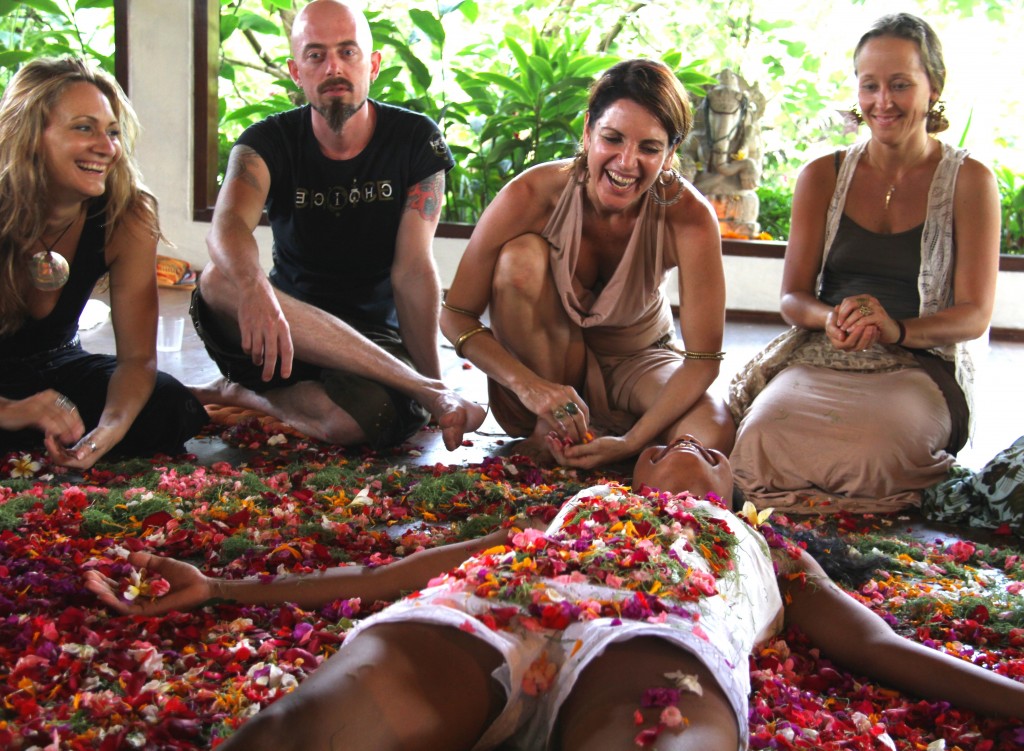
More from Tina Nance here: www.tinanancecom

